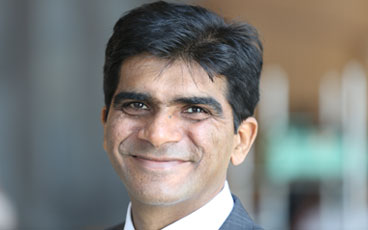How has simulation evolved with growing demands for speed and productivity?
ANSYS has been in the simulation business for more than 40 years. We have seen adoption of simulation evolve dramatically over the years globally as well as in India. Increased computing power and sophisticated code development has particularly accelerated the use of simulation in product design in the last decade.
How are you battling the struggling Indian economy? Has the falling rupee affected your business?
We are a global business and like any other business currency cycles have their effect. However, our business in India has not been affected. We are helping our customers during these times to help them reduce cost, time to market and improve quality, thus making them more competitive.
India has become home to many global simulation solution providers, what are your strategies to survive the competition?
The product has to be at the center of competitive advantage. Strong development and planning efforts worldwide has been our core strength. Accuracy and reliability of results, especially in critical applications is of paramount importance to us, thus our tag line ‘Realize Your Product Promise’.
Apart from this, like I already mentioned, we have a successful track record of being the business for 43 years. We have retained top talent that understands the products and the development processes.
What sort of demands do you see in the simulation industry, particularly in India?
According to me, India is still evolving, but evolving fast as a consumer of simulation technology. We have a broad spectrum of customers with most sophisticated needs to mid-tier players who are using simulation products at a basic level at present. I notice increasing number of companies interested in simulation than ever before as it directly adds to reducing costs and cutting on the product development time.
Do you think the SMEs in India are ready to adopt highly automated products?
Depending on the sector about 20–25% visionaries and SMEs are investing in simulation technologies. One of the main reasons why various SMEs are still not open to adopt the simulation technologies is due to their perception of cost and their ability to hire, train and retain engineers. Those who have invested in simulation are seeing the bigger picture. More and more SMEs are now considering simulation technology as OEM’s are getting them involved in their Product Development (PD) cycle much earlier and expect them to add value in their PD process to reduce overall cost and time
What percent of your revenue comes from small enterprises?
We cannot provide any specific local revenue information. However, globally and in India our revenues are growing quite significantly from the smaller enterprises.
As the biggest consumer of machine tool, automotive industry is in bad shape, which are the other sectors emerging as other potential customers?
I feel the current slump in automotive industry should be seen as an opportunity for companies to invest in refined products and future competitive advantage. Verticals like aerospace, defense, oil & gas are emerging strong.
India being a price sensitive country, what are the challenges faced in terms of adopting latest simulation solution in India?
Price is and always will remain a factor. According to me, top global and Indian companies understand the value of simulation adoption. However, there are two interrelated challenges – developing a robust internal company specific product development processes that are scalable and identifying & nurturing product development talent.
Can you please tell us about your R&D activities and what per cent of your revenue is dedicated to R&D?
ANSYS products are used across major industry verticals and we have a focused research and development team. I cannot be specific at this time but this includes broad capability additions to product enhancements catering to a wide range of customer needs across industries.
How was 2013 in terms of business, what were the challenges and what are your expectations from 2014?
Looking back, 2013 has provided a challenging business environment for majority of companies that operate in India. But in challenges lie opportunities and 2014 should offer them in plenty.
nishant@mfgtechupdate.com


